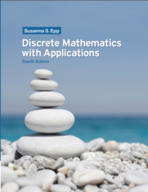An interesting use of the inclusion/exclusion rule is to check survey numbers for
Chapter 9, Problem 35(choose chapter or problem)
An interesting use of the inclusion/exclusion rule is to check survey numbers for consistency. For example, suppose a public opinion polltaker reports that out of a national sample of 1,200 adults, 675 are married, 682 are from 20 to 30 years old, 684 are female, 195 are married and are from 20 to 30 years old, 467 are married females, 318 are females from 20 to 30 years old, and 165 are married females from 20 to 30 years old. Are the polltakers figures consistent? Could they have occurred as a result of an actual sample survey?
Unfortunately, we don't have that question answered yet. But you can get it answered in just 5 hours by Logging in or Becoming a subscriber.
Becoming a subscriber
Or look for another answer
